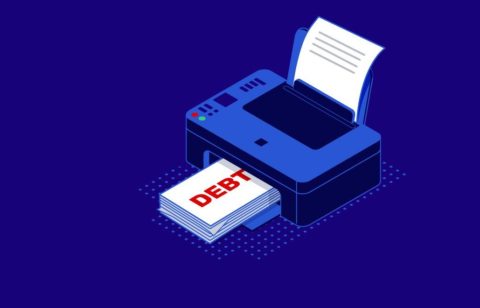In today’s society, almost everyone has some amount of debt. The sad state of our economy has certainly played a part in this but so, too, is the fact that it is so easy to get credit now. We are all bombarded by offers for credit cards, personal loans, department store cards and other forms of easy-to-get credit. It is difficult to not take advantage of all these offers, especially if you are having financial problems. But it’s important to remember that if you’re not careful, you could end up with an enormous amount of debt.
Unsecured debt consolidation financial loans
If you feel like you’re sitting under a mountain of debt, one way to get things back under control could be unsecured debt consolidation financial loans. To qualify for one of these loans, you really only need to be an adult and have enough income to be able to make payments on the loan. Also, you should not have ever filed for bankruptcy, not have unresolved issues with a bank or other financial institution and it’s best if you have a decent credit score.
Why these plans are popular
The reason that unsecured debt consolidation financial loans are popular is because you don’t have to pledge an asset in order to “secure” it. In comparison, to get a “secured” debt consolidation financial loan, you would need to put up some asset such as the equity in your house as collateral in order to qualify. Unsecured debt consolidation loans are especially good for people who don’t own a home or have any other asset they could use as collateral for a secured loan.
Do your homework
Before you apply for an unsecured debt consolidation loan, be sure to sit down and make a list of all your financial obligations such as charge card debt, medical bills, department store charge cards and personal loans.
Second, research the market to get the best possible loan plan at the cheapest possible interest rate.
Third, make sure that you are getting that loan from a trusted and ethical source as there are a number of unscrupulous companies out there that will charge a high application fee but then never deliver on the loan.
Use the Internet
In many people’s opinion, the best way to do your research before you apply for an unsecured debt consolidation loan is through the Internet. You can search on the term “debt consolidation loan” and probably find a website where you will need to enter your information just once and then receive offers from many different lenders. Filling out an online form to apply for a debt consolidation loan is usually no more difficult than filling out an application for a charge card. You will need to provide your personal and employment information and be sure that he information is honest and correct.
Good interest rates
Unsecured debt consolidation financial loans used to come with high interest rates because of the risk that’s taken by the lenders. However, thanks to the Internet, the market for these loans has become very competitive, which has caused interest rates to drop. In fact, it is now possible to get an unsecured debt consolidation loan at a very reasonable interest rate. However, as in most matters, let the buyer beware. You need to make sure you understand all the terms and conditions before signing for the loan. In fact, if possible you should get an experienced financial consultant to review the various plans and help determine which would make the most sense for you–given your financial circumstances.







